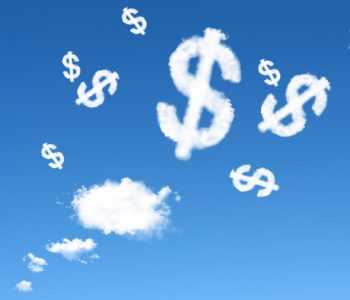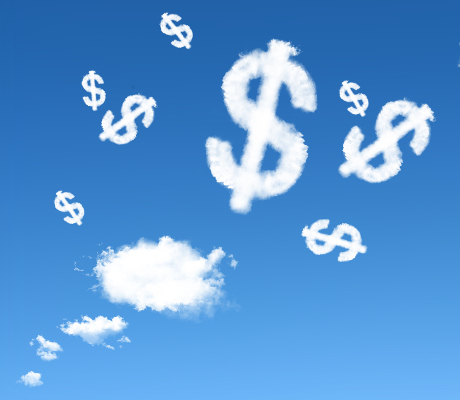5 High-Dividend-Yielding Stocks to Consider in 2017

High-Dividend-Yielding Stocks
High-dividend-yielding stocks are a great way to earn a large, steady income to fund your retirement, generate extra income, or create a rainy day fund for yourself.
There are many high-dividend-yielding stocks that you could own to reach your desired goals. However, there are a few things to consider if you want to achieve them earlier than expected. This is why the focus of this article is owning high-quality, high-dividend-yielding stocks.
The first thing to take a look at is the yield of a stock to determine if it offers a high dividend. The dividend yield is the annual payment received, divided by the current stock price and then converted to a percentage.
You will also want to take a benchmark dividend yield and compare it to the stock’s current one. When the stock has a higher yield, it means that it has a high dividend. A great benchmark to use is the S&P 500, since the companies that make up the index are the 500 largest in the U.S. based on market cap. This is why many investors keep a close eye on this index.
The current yield of the S&P 500 is the benchmark of 2.2%. Therefore, any stock that is yielding more than this amount would be considered a high-dividend-yielding stock.
As mentioned earlier, not all high-dividend stocks would be considered top-quality. Below are the means to determine this quality, as well as a list of potential high-dividend-yielding stocks.
Things to Consider When Looking at High-Dividend-Yield Investments
When taking a look at dividend-paying stocks, consider both the current stock price and the previously mentioned dividend yield. That said, I would recommend taking an even deeper look beyond these. That way, you can ensure that the dividend is able to continue to both be paid out and generate a steady income.
As long as the dividend is able to be paid, it will provide support and hopefully lead to a gradual increase in the stock price. Investors, who flock to investments that have a reliable dividend payout, would also see both income- and capital-based returns.
Here are some other things to consider before investing in any stock based on its dividend.
1. History of the Dividend Payments
Even though the past cannot predict the future, the dividend history is still very important. That’s because it will give insight on how a company’s management treats shareholders.
A shareholder-friendly management team will do one of two things: pay a continuous steady dividend or pay one that grows over time. A growing dividend is seen as more shareholder-friendly. This is done because the company’s gross and net income have seen a boost, leading to shareholders being rewarded.
However, not all companies that pay out a dividend also have a steady or growing stream of income. In fact, there will be times a company either decreases our eliminates its dividend. This would occur due to cash flow problems or finance restructuring and could result in the share price decreasing, since investors may exit their position to look for someone more reliable.
In both cases, there is a high probability that what has occurred in the past could also happen in the future. So if a company has never cut its dividend, it may never do so well into the future.
2. How Much of the Dividend Is Being Paid Out
A company paying out a dividend uses its money from earnings. As an income investor, it is very important to take a peek at how much a company is earning annually and paying out via the dividend. Needless to say, the earnings should be greater than what is being paid out.
The ratio that is used to determine this is the payout ratio. The percentage is calculated by taking the annual dividend payment and dividing it by the annual earnings.
If the ratio is exactly 100%, if means that every dollar earned by the company is being paid out as a dividend. A ratio above 100% means the company paying out more than it earns. In this case, the shortfall in the dividend is being paid by debt, issuing more shares, or cash that was already in the company’s bank account. If this goes on long enough, there is a possibility of the dividend being cut or stopped outright due to cash flow problems.
The companies you want are those with a payout ratio below than 100%. This ratio means the company can use earnings for dividend payments and other areas of the business. Therefore, the result should be more money in investors’ pockets, and hopefully a capital gain following a share price increase.
This would also affect the safety of the dividend payment, since a ratio under 100% means that the dividend is highly sustainable and bears the possibility of growth.
3. Sector Volatility
Not all companies that pay a high dividend yield should be considered. Those that pay out a dividend do so because they have extra cash flow and no reinvestment opportunities that would generate a high rate of return.
Any investor wants to preserve their capital investment and let it grow over time. Companies that have volatility in their earnings could see big swings in their stock price. This will impact the overall return in the stock.
Before an investment is considered, a couple of things should be observed. The first is the stock price performance over the past few years. I would recommend taking a look at the past one-year and five-year historic returns to see if there were any huge price swings.
If there was, next look to see if it was related to the stock market or the company itself. Company-related would be based on news coming out of the business, such as earnings, senior position changes, or a new product launch. On the other hand, market-related swings would have affected all companies in the sector.
Another area to take a look at is the past and projected future earnings, which should be steady and growing over time.
The last thing to consider is the daily volatility, seen through the stock’s beta. The way it works is the market has a beta of 1.0 and each stock has its own unique beta. A stock that has a beta of 1.0 will see the same average return and movement as the overall market, while a beta of less than 1.0 would mean less volatility than the overall market and one over 1.0 means more.
A beta below 1.0 is what investors desire, since they will be less volatile and are most likely to preserve the capital in the investment. This is important to consider since the investment stock return will be based both on the dividend payment and the stock price return.
With all that said, below is my list of quality high-dividend-yielding stocks, which take into account everything discussed above.
List of High-Dividend-Yielding Stocks
| Company Name | Ticker | Price | Yield | Beta |
|---|---|---|---|---|
| Shaw Communications Inc. Class B | SJR | $21.07 | 4.17% | 0.91 |
| STC Pipelines, LP | TCP | $60.16 | 6.26% | 0.98 |
| Gaming and Leisure Properties Inc. | GLPI | $34.29 | 7.23% | 0.97 |
| Orchids Paper Products Company | TIS | $23.68 | 5.91% | 0.97 |
| Fifth Third Bancorp | FITBI | $28.66 | 5.78% | -0.42 |
1. Shaw Communications Inc Class B
Canadian business Shaw Communications Inc Class B (NYSE:SJR) is divided into four segments: Consumer, Wireless, Business Networks Services, and Business Infrastructure Services.
The company is trading at $21.07 and yielding 4.17%. The dividend yield is nearly double that of the S&P 500, and even though the yield is high, the dividend has been growing. The dividend is paid on a quarterly basis.
The beta for SJR stock is 0.91, representing lower daily volatility than the overall markets.
2. TC Pipelines, LP
TC Pipelines, LP (NYSE:TCP) acquires, owns, and manages pipeline assets. The pipelines are used to transport natural gas and oil across the U.S.
The great thing about TC Pipelines is that its earnings are protected from inflation. More specifically, any inflation that would impact TC is passed along to customers instead.
As the earnings of TC have increased, so has the dividend, which is reviewed every July.
3. Gaming and Leisure Properties Inc
Gaming and Leisure Properties Inc (NASDAQ:GLPI) is a real estate company with properties across the U.S. Its assets include running casinos and guest accommodations.
The dividend is paid out on a quarterly basis and has been reviewed up to twice a year.
The dividend yield is 7.23%, based on the current trading price of $34.29.
4. Orchids Paper Products Company
Orchids Paper Products Company (NYSEMKT:TIS) sells its goods around the world. The company produces paper products, including tissue paper, paper towels, and paper napkins, just to name a few.
TIS stock has been paying a steady quarterly dividend of $0.35 per share. Based on the current trading price of $23.68, the dividend yield is 5.91%.
5. Fifth Third Bancorp
Fifth Third Bancorp (NASDAQ:FITBI) focuses on servicing customers with its lending, death management, and everyday banking needs.
Fifth Third Bancorp’s beta is -0.42, which means it is uncorrelated to the market. This is seen as a good thing, because when the overall markets fall, the company has tended to increase. Therefore, should you own FITBI stock, it should not show a return that is linked to the rest of your portfolio.
Based on the trading price of $28.66, the current dividend yield is 5.78%.











